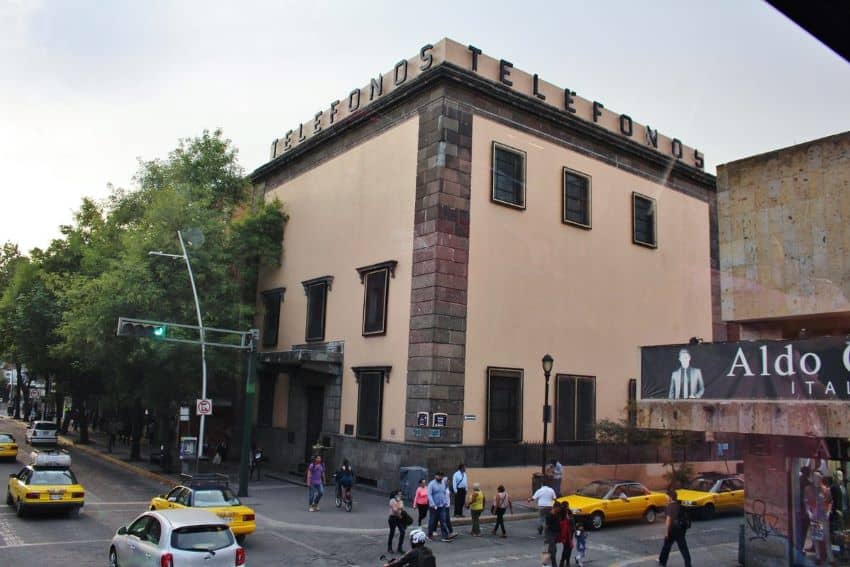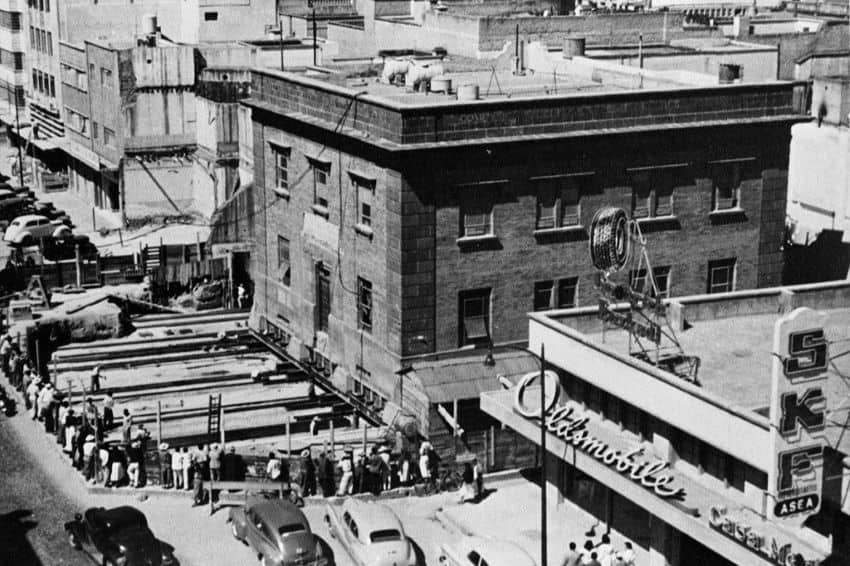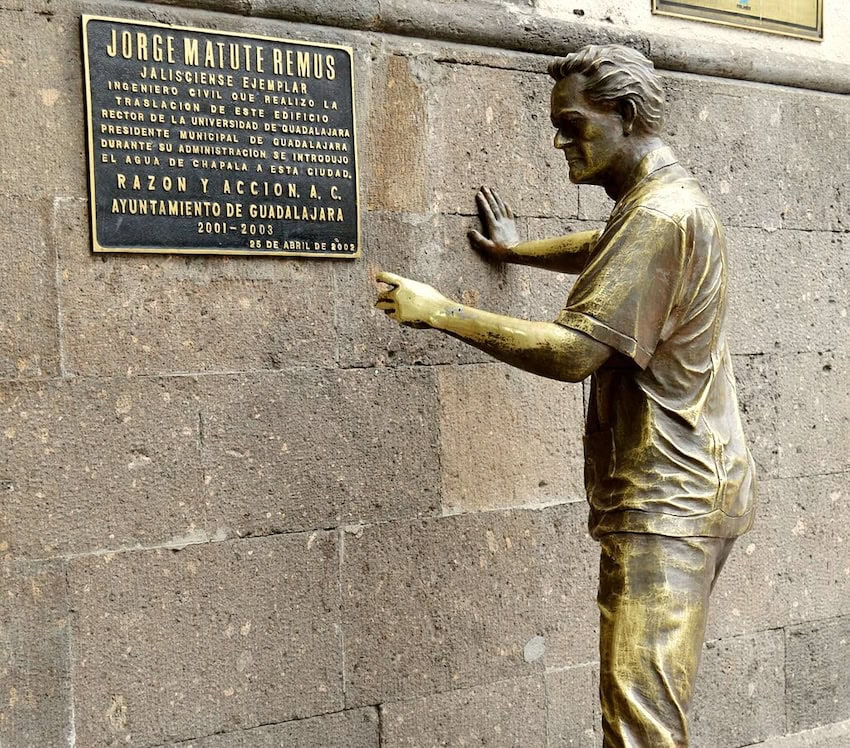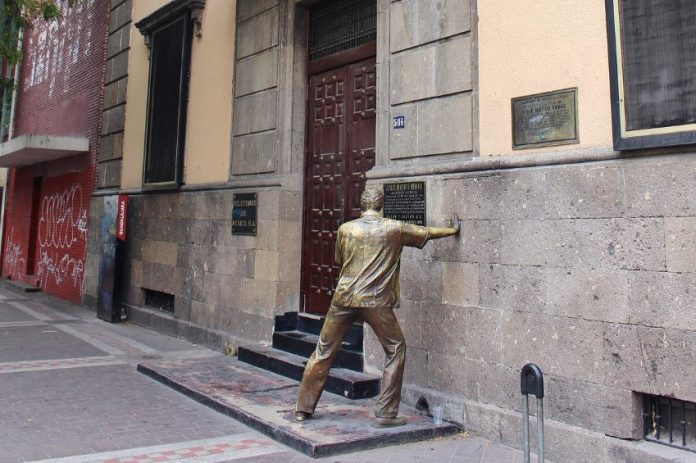In 1950, engineer Jorge Matute Remus (1912-2002) led the incredible feat of moving a building in downtown Guadalajara almost 40 feet backward to enable the expansion of Juárez Avenue.
The 1700-ton building on the corner of Juárez and Donato Guerra was relocated 11.82 meters (almost 40 feet) in only five days, a move that also included a slight rotation. But even more remarkable: It was moved while people were still working inside.

There’s a building standing in the way!
In the late 1940s, the governor of Jalisco, Jesús González Gallo, decided to widen Juárez Avenue in the capital city of Guadalajara due to increasing traffic congestion. As part of the expansion, the state government decided to demolish some buildings along Juárez Street, including the building of the Mexican Telephone Company — present-day Telmex.
However, the building’s owners won an amparo trial (injunction) that protected the three-story building from demolition.
“The telephone company was a foreign company owned by Swedes,” engineer Juan Armando Duarte, a former student of Remus, recalled in an interview.
“[The Swedish company] went to trial against the state government’s work to widen the avenue because demolishing and rebuilding the building was difficult and expensive. Moreover, they didn’t want the telephone services to be suspended.”
According to Guadalajara historian Armando González, the city had bought and demolished all the houses on the north sidewalk to expand Juárez Avenue, except for the Mexican Telephone Company building, which was in the middle of the new street, strangling circulation.
The issue, then, was how to get rid of a building without demolishing it.

It was then that Remus, then the Rector of the University of Guadalajara (UdeG) and a member of the State Planning Commission, suggested the impressive idea of relocating the building without demolishing it and interrupting the city’s phone services.
“More than one member of the City Hall thought it was a crazy idea,” Duarte said.
However, the project started to take shape, and executives from the telephone company traveled from New York — where the company was headquartered — to Guadalajara to talk to Remus and evaluate the proposal.
They estimated that moving the building would cost 1 million pesos at that time, compared to the 9 million pesos it would’ve cost to demolish the building and construct a new one.
Faced with no other alternative, the telephone company agreed.
Manos a la obra – let’s get to work!

In tandem with an exceptional team of engineers and construction workers, the amazing feat took four days, from Oct. 24 to Oct. 28, 1950, without affecting the building, breaking a single window pane, or interrupting the phone operators’ work.
The preparation work, however, took 6 months, including excavation, demolishing the neighboring houses, and building the foundations of the new location. After that, Remus and his team assembled a structure to slide the building over to its new location.
According to Duarte, Remus was inspired to move the building by the mechanism used to move train wagons — rails.
Four rails were placed on each side of the foundation columns, Geotecnia Magazine explains in an article dedicated to the maneuver. Railway-type mechanical jacks were installed horizontally in each of the drag beam axes to generate the thrust force.
A sound system with loudspeakers was also installed so workers could hear Remus counting down to each push. After a few hours of operation, all the jack operators worked on command in perfect synchronism.
Each operator’s impulse moved the building forward 4/5 of a millimeter at a speed of one centimeter per minute, making the building’s movement imperceptible to the telephone workers inside.
During the five-day relocation process, over 100 workers remained inside the building, ensuring that the telephone service was not interrupted at any time.
One of the telephone operators testified that they were nervous, but Matute reassured them by speaking to them.
“We were very nervous, but Engineer Matute explained clearly that there would be no problem and that we would not feel anything. He was confident in what he was doing and conveyed that to us.”
Other testimonies suggest that to reassure the telephone workers, Remus asked his wife, Esmeralda Villaseñor de Matute, to remain in the building with their 7-year-old son, Juan Jorge.
More historical works about Matute Remus
Experts consider Remus’ achievement the engineering masterpiece of Guadalajara in the 20th century. The project was highly praised by both the State Planning Commission and the telephone company’s headquarters in New York City.
After his great accomplishment, Matute Remus served as the mayor of Guadalajara from 1953 to 1955. One of the most significant achievements during his presidency was establishing a drinking water supply for the city from Lake Chapala.

During his tenure as Rector of the UdeG, he made it possible for students from all over the state to enroll in the university, which was previously only accessible to students from public schools in Jalisco. He was also instrumental in establishing the School of Architecture.
He also modernized the city’s urban planning, expanding and building new highways like the Guadalajara-Chapala road, Lázaro Cardenas, and the construction of Guadalajara’s International Airport, among many other public works.
Due to his accomplishments, he was honored with the title Benemérito Ilustre de Jalisco (Jalisco Distinguished Honoree) in 2012. His remains rest in the Rotunda de los Jaliscienses Ilustres in Guadalajara.
His achievements also gave him international fame, for which he received the French Order of Academic Palms and a UNESCO acknowledgment for his contribution to education.
Almost a century later, the building’s story continues to live in the collective imagination of Guadalajara’s residents, young and old.
To engrave his name in our memory and that of future generations, the Matute Remus bridge (built in 2011) carries his name, in honor of an engineer and leader who left a lasting mark on the city of Guadalajara.
Gabriela Solis is a Mexican lawyer turned full-time writer. She was born and raised in Guadalajara and covers business, culture, lifestyle and travel for Mexico News Daily. You can follow her lifestyle blog Dunas y Palmeras.
